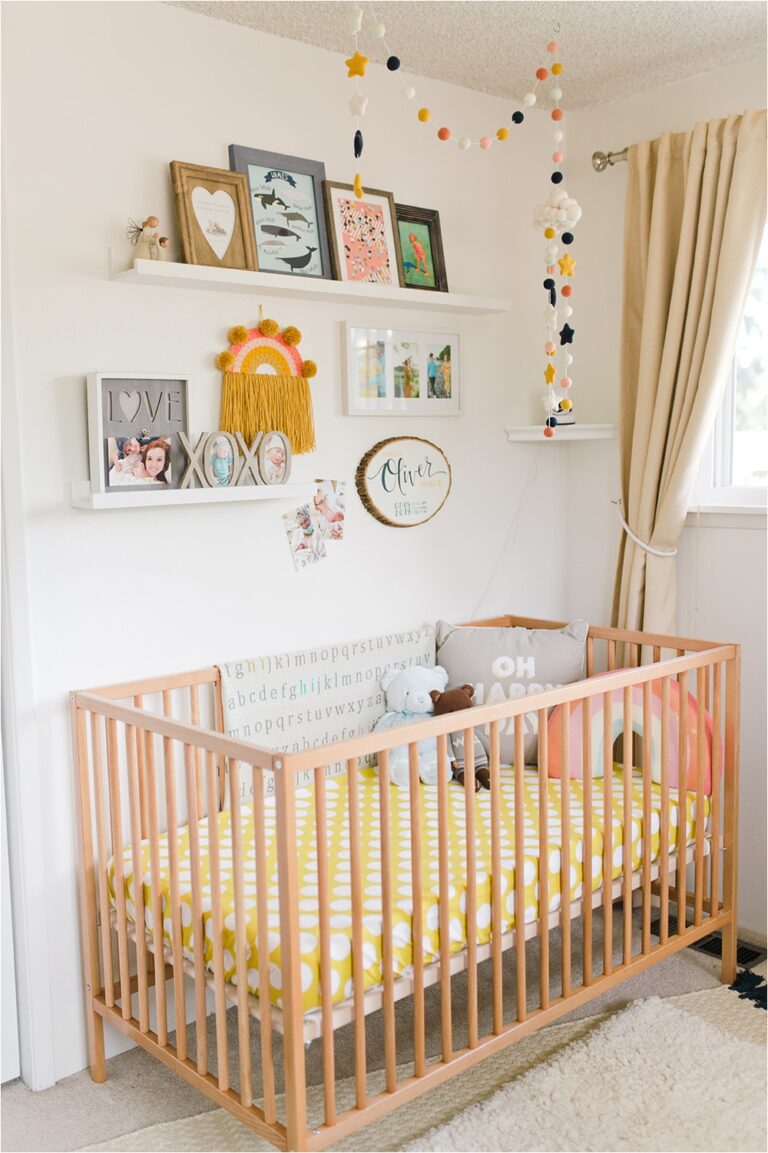Om Mama Collective Member Tiffany Decker of Seattle Sleep Trainer shares how to weather your baby’s ever-changing sleep habits.
 I don’t know about you, but it seems like the minute you figure out your baby’s sleep they hit a new developmental leap and everything seems to get thrown out the window. It can be anxiety-provoking, nerve-racking and just plain exhausting. The worst part is that often, sleep gets disrupted before we see the developmental change.
I don’t know about you, but it seems like the minute you figure out your baby’s sleep they hit a new developmental leap and everything seems to get thrown out the window. It can be anxiety-provoking, nerve-racking and just plain exhausting. The worst part is that often, sleep gets disrupted before we see the developmental change.
What happens during developmental leaps?
During developmental leaps, your baby is either achieving new physical milestones or cognitive changes (or both!) They may be learning to roll, crawl, stand, talk, play with their voice, understand object permanence, or be developing separation anxiety. I imagine these leaps like giant information “downloads” for their brains. There’s just so much going on that it’s hard for them to process and everything is just a bit dysregulated for awhile. What can be frustrating
Some of the sleep changes we typically see are:
- Naps shortening or schedule seeming out of whack
- Harder to put down for naps
- More protest with bedtime and naptime
- Wakings in the middle of the night (or more wakings if there are already some)
- “Practicing” skills in the middle of the night (hello rocking baby staring at the monitor!)
- Toddler bedtimes extending for “just one more book/snack/hug”
The TLDR version of how to address developmental leaps is to stay consistent with your routines, assuming your baby is already putting themselves down independently. Leaps usually disrupt night sleep for 3-7 days, then you can get right back on track. Bigger leaps like around the 8-10 month and 15-18month marks can be more disruptive, and I have given you some ideas on how to move through them.
With all changes to sleep- either from developmental leaps, teething, or illness, you may need to “reset” their sleep habits. You’ll want to go back to the method you used to help them fall asleep independently. (Haven’t sleep trained and want to know more?”)
What are some common developmental leaps?
There are three major leaps between 4months and 2 years. They can each do a number on sleep, and each has its own underlying issues. Here’s a brief overview:
4 Month Leap aka the 4-Month Sleep Regression:
This is a huge cognitive leap often accompanied by motor skill changes like rolling, grasping, laughing, etc. But the main culprit at play is the change in how their sleep patterns work and how they handle wake-ups. This is the time your baby’s sleep patterns are shifting and resembling adult patterns more. This is also when they stop waking just for fulfilling a need and then going back to sleep. Instead, they are waking and more observant. If they don’t already know how to settle back into the next sleep cycle, they will be looking for help doing so.
Predictable naps and routines that were falling into place from 2-3 months now become unpredictable, naps seem short (25-30 minutes) and scattered.
Overnight wakings no longer seem related to food, but feeding may be the only (or quickest) way to get your baby to go back to sleep.

What you can do:
- Tummy time, lots and lots of Tummy time. The sleep-related goal with tummy time is to give ample opportunity for your baby to practice new motor skills during the day so they have less desire/need to practice overnight.
- Implement a nap schedule. The ideal nap schedule for 4-month-olds is typically three naps, with a wake period of around 90 minutes between naps.
- Establish a bedtime and a sleep routine that is short and that any caretaker can replicate.
- Work toward having your baby fall asleep independently. There are a variety of methods in which you can do this, some leading to change more quickly, others making changes more gradually.
- Decipher which night wakings are truly feeding related. You’ll notice these generally occur and predictable times overnight. Obviously, tend to your baby’s need for nursing or a bottle. The seemingly random wakes, though, you can try to approach by soothing in different methods (rocking, bouncing, have a partner try to soothe, etc). It may take a little while longer, but if your baby goes back down you’ll know that that waking was not feeding-related and will have established a way to soothe other than feeding.
8-10 month Leap:
What’s happening:
- Motor skill development (maybe crawling, pulling up)
- Possible words
- Potential teething
- Separation anxiety
- Dropping from 3 naps to 2
Sleep disturbances that you may notice:
- Hard to put your baby down for a nap or at bedtime/ more crying than usual at these times
- Night wakings increase
- Night wakings may include practicing new skills
What you can do:
Unfortunately, a lot of what’s happening here just needs to be weathered. When new skills are being learned and practiced, we can only give them ample time to master them or get to a point they no longer want to practice at night.
But, if your baby is showing signs of separation anxiety, there are some ways you can work with your baby to help them. First, make sure that you’re not sneaking away from their bed after they’re asleep. It’s important for them to know you’ve left the room prior to them falling asleep, as anxiety can be increased if your baby wakes to you not being there.
Second, you may want to introduce a lovey. Remember that the AAP guidelines state nothing in the crib the first year, so check with your pediatrician and weigh the pros and cons.
Hold steady on your routines as much as possible
15-18 Month Leap and Sleep Regression
This may be the hardest developmental leap to work through. During this time there are nap changes from 2 to 1, separation anxiety might come back, and your toddler learns to test the limits of the world around them. Here’s what you may notice:
- Resisting all naps
- Extra cranky (overtired)
- Wanting “one more” thing at bedtime (book, hug, snack)
- Bedtime routine getting longer
- Calling for you overnight
This is a time that holding steady to routine and really focusing on your little one’s sleep is important. Here are the top things to do:
-
- Assess daytime sleep. Don’t be fooled to think it’s time to get rid of naps. The only nap of the day typically starts between 12:30-1. Ensure there is enough wake time between the end of nap and bedtime, usually around 4 hours.
- Limit major changes. This is not the time to switch from crib to toddler bed (i recommend keeping crib until 3 yo if possible).
- Focus on the commitment to routine, communication, choice, and involvement
Commitment to the routine means exactly what it sounds like: hold steady on your boundaries in a firm and loving way. Allowing boundaries to move sometimes, but not others, only reinforces your child’s attempts at getting more from bedtime. I refer to this as the “slot machine” effect.
What do communication and involvement look like? These are key approaches to helping with bedtime power struggles. First, reinforcing boundaries and expectations in a consistent and loving manner. Remind your child of what bedtime routine will involve. For example, brushing teeth, reading 2 books, a song, and saying goodnight.
Give your child tasks to do so they are involved in the process. They can get their PJs out of the drawers, turn the sound machine on, and help put their dirty clothes in the hamper, for example.
As you’re giving tasks, also offer choices (that you’re comfortable with). You may say “would you like “Goodnight Moon, or “Baby Beluga” tonight?” “Would you like to sing song “a” or song “b”?
The more agency your child has in the process, the less of a struggle there will be (usually). You just have to maintain the structure of the routine for them.
So, if your baby was sleeping long stretches, or even sleeping through the night, and you notice that they all of a sudden start to wake more often or that everything just seems whacky- well, it’s normal. Solidarity!
PSST- I really mean it- here’s my own story!
Want help getting all the pieces put together? We offer 3 full days and nights in-home to lay the foundation of sleep training (most babies sleep through the night by the time we leave) and an entire month of follow up support! OmMama members get $250 off their sleep package! Connect with us at SeattleSleepTrainer.com
 You can follow Tiffany on Instagram
You can follow Tiffany on Instagram






